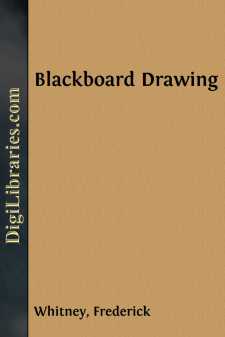Categories
- Antiques & Collectibles 13
- Architecture 36
- Art 48
- Bibles 22
- Biography & Autobiography 813
- Body, Mind & Spirit 142
- Business & Economics 28
- Children's Books 17
- Children's Fiction 14
- Computers 4
- Cooking 94
- Crafts & Hobbies 4
- Drama 346
- Education 46
- Family & Relationships 57
- Fiction 11829
- Games 19
- Gardening 17
- Health & Fitness 34
- History 1377
- House & Home 1
- Humor 147
- Juvenile Fiction 1873
- Juvenile Nonfiction 202
- Language Arts & Disciplines 88
- Law 16
- Literary Collections 686
- Literary Criticism 179
- Mathematics 13
- Medical 41
- Music 40
- Nature 179
- Non-Classifiable 1768
- Performing Arts 7
- Periodicals 1453
- Philosophy 64
- Photography 2
- Poetry 896
- Political Science 203
- Psychology 42
- Reference 154
- Religion 513
- Science 126
- Self-Help 84
- Social Science 81
- Sports & Recreation 34
- Study Aids 3
- Technology & Engineering 59
- Transportation 23
- Travel 463
- True Crime 29
Blackboard Drawing
Description:
Excerpt
BLACKBOARD DRAWING
one of the teachers who read “The School Arts Book” from month to month doubt in the least the value of drawing in our schools, and there is no need of the slightest argument in its favor. Even in the lowest grades the teacher appreciates drawing as the natural expression of the thought and experience of the child; a spontaneous activity, having its relation to life, not a thing apart from life or an end in itself. Throughout the grades the teacher should cultivate this spirit of freedom and interest, remembering that drawing is a language to be used as naturally and freely as one written or spoken.
Why should these suggestions not apply to the teacher as well as to the child? Why should she not express herself, the interests of school life and of the pupil in the same free, natural way?
Upon entering a schoolroom the teacher finds the blackboards bare and dull. There is little in the line of decoration in the room and in order to relieve this monotony she stencils a border, the picture of some great hero or well-known author, draws with colored chalk the inevitable flags crossed at right angles or puts upon the board some design which possibly may or perhaps may not have relation to the needs of the children, their life and activities, or the industries of the school.
When the drawing on the part of the child becomes the natural and free expression of the activities and interests of every-day life, and the teacher uses this graphic language in the same manner, the blackboards will be found constantly in use and upon them an ever changing series of drawings. These drawings should be illustrations of the geography, history, literature, nature work or any other line demanding their aid. Let them be drawings upon which a few moments of time are spent, a free sketch illustrating the object or topic as a means of making the subject clearer in the minds of the pupils, not a picture produced by the labored use of chalk and eraser, to be kept upon the board indefinitely as a bit of decoration.
Let me suggest the practice of the following strokes and later we will try their application in various drawings recommended by teachers from several schools. In these illustrations use about two-thirds of a stick of soft blackboard crayon, using the large end and drawing with the side of the chalk. This use of the crayon will produce any tone from white to neutral gray.
No. 1. Place the chalk in a horizontal position and try a smooth even stroke one or two feet in length.
No. 2. A similar stroke in a graded scale letting the pressure become less and less toward the lower end of the stroke.
No. 3. Reverse No. 2 hardly touching the board at first and increasing the pressure toward the lower end.
If charcoal is used for the lower tones, a very satisfactory scale may be produced as in the last illustration on .
No. 4. Combine No. 2 and No. 3 in a single stroke. Try all these strokes again and again in a vertical, horizontal, oblique, and curving direction until each can be made in a second or two....



